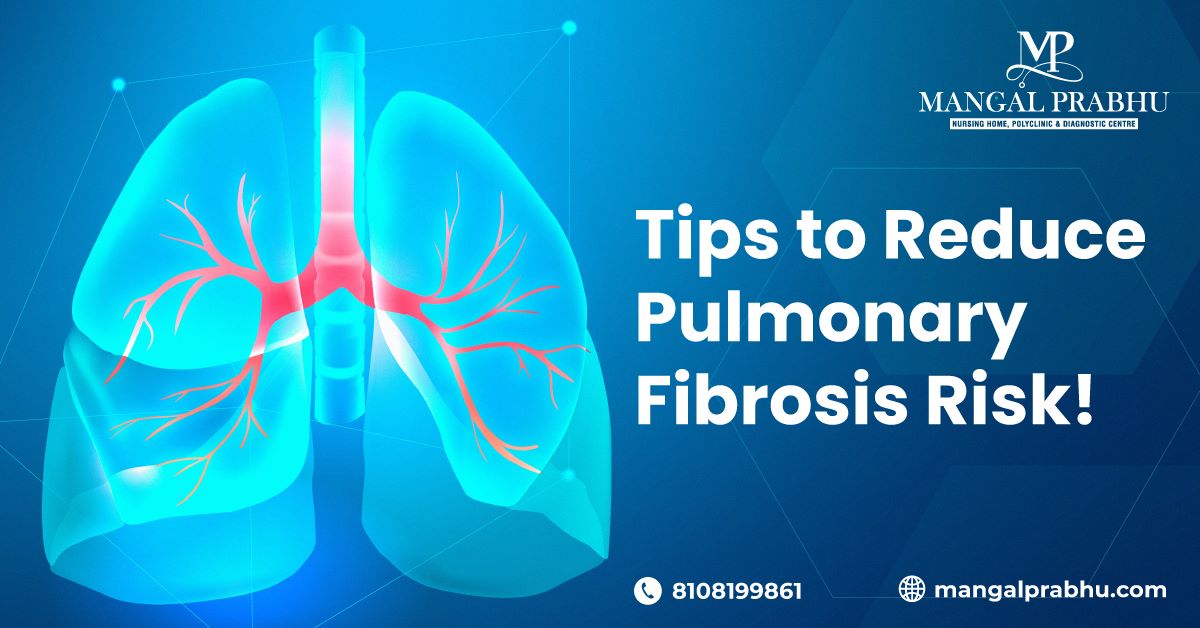
Pulmonary fibrosis is a lung disease that thickens your lung tissues and causes scarring. The disease affects the lung, the surrounding tissues, and the air sacs, affecting the ability of the lungs to expand normally. As a result, the patient experiences difficulty breathing, dry cough, and fatigue.
You can see a general physician in Navi Mumbai to identify the symptoms of pulmonary fibrosis and figure out the most suitable treatment. However, the condition has currently no cure. We’ve listed some ways you can reduce the risk of developing the disease. Let’s take a look.
How To Reduce the Risk of Pulmonary Fibrosis
Unfortunately, there is no certain way or a proven method to prevent pulmonary fibrosis, but a few right steps can reduce your risk of developing the condition and managing it if you are already diagnosed with this lung disease. Here’s what may help.
1. Avoid Dust Exposure
One of the many risk factors for developing pulmonary fibrosis is exposure to dust and fumes. Working in a place where you are exposed to dust can put you at an increased risk of respiratory diseases, which can eventually result in pulmonary fibrosis. To lower your risk of the condition, it’s advisable to avoid exposure to dust and other harmful elements as much as possible.
2. Quit Smoking
Smoking causes inflammation in your lungs and creates thick mucus, which increases your risk of developing chronic lung diseases, lung cancer, and pulmonary fibrosis. Not just that, but smoking can make the disease worse. If you have pulmonary fibrosis, you must quit smoking right away to prevent the disease from worsening.
3. Get Treatment for Lung Infections
Chronic lung diseases develop gradually and worsen over time when left untreated. It’s important that you see a doctor if you notice any signs of infection. Infections like flu and pneumonia can weaken your lungs, making them vulnerable to chronic lung conditions. Getting vaccinated for such conditions is important to reduce the risk of pulmonary fibrosis and other lung diseases.
Also Read: COPD: Symptoms And Stages
Treatment for Pulmonary Fibrosis
While there is no permanent cure for pulmonary fibrosis, you must visit the pulmonology treatment center in Navi Mumbai to discuss the treatment options for managing the disease and slowing its progression.
- Oxygen Therapy: If the levels of oxygen are found in lower than normal volume, the healthcare expert might recommend you get oxygen therapy either through the oxygen tank or nasal cannula. However, it doesn’t cure pulmonary fibrosis. The therapy can improve your quality of life by managing your symptoms and helping you breathe comfortably.
- Medication: Based on your health, you might be advised to take certain medications to get relief from the symptoms of pulmonary fibrosis. Immunosuppressants and bronchodilators are commonly prescribed to patients at risk of developing lung conditions or those diagnosed with chronic lung disease.
- Lung Transplant: In some cases, a lung transplant might be needed to recover from the condition. If your lungs have been severely damaged, the doctor will advise you to replace them with healthy donor lungs.
Conclusion
The prevention of pulmonary fibrosis is essential for preserving respiratory health and overall well-being, to sum up. People can significantly reduce their risk of developing pulmonary fibrosis by adhering to the advice provided in this blog, such as quitting smoking, avoiding dust exposure, and seeking early medical intervention for any respiratory symptoms.
Always remember that prevention is always preferable to treatment and that protecting your lungs is an investment in your long-term health. Remain informed, look after your respiratory system, and put your health first. By doing this, you can live a healthier life and lower your risk of developing pulmonary fibrosis.
